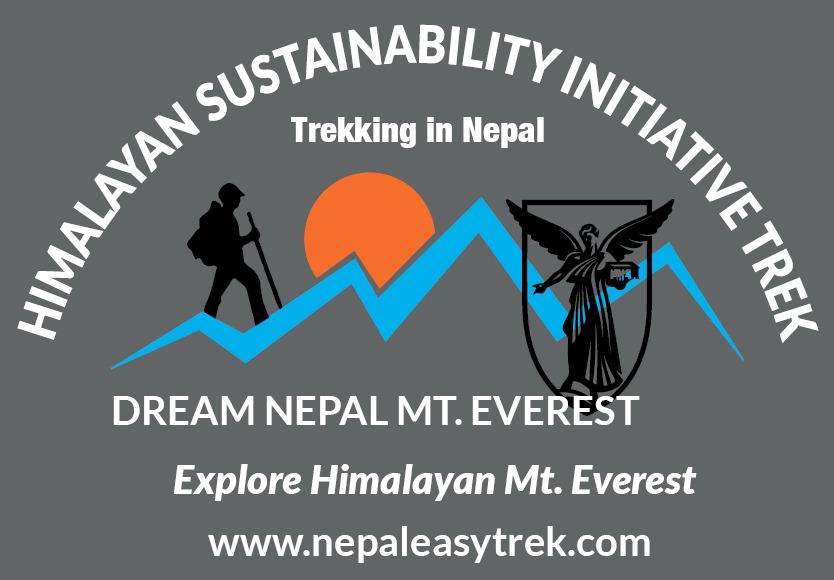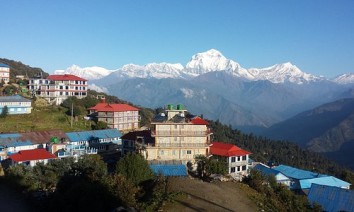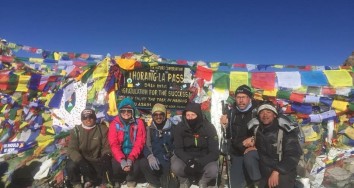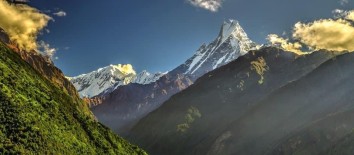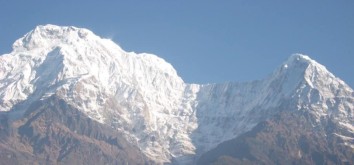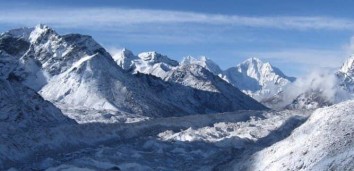Annapurna Khayar Lake Adventure Trek takes you to the off beaten trail in the Annapurna Region. The sacred Khayer Lake (4500m) is the major attraction of this adventure trek. You will also explore the villages of Gurung, Magar settlements with their warm welcome and hospitality.
Khayar Lake trekking trail is a new destination and perfect rough route away from the road construction in Annapurna. The trail passes through the traditional villages, amazing landscape and lust forest. Stunning views of the Annapurna and Dhaulagiri ranges are also the attraction of this trek.
Khayar Lake is a high mountain lake situated at an altitude of 4500 m in the Annapurna Region. Khayer Lake adventure trek starts with short drive from Pokhara to Nayapul. Then we visit Ghandruk, one of the popular Gurung villages and great views point from Ghandruk and visit old Gurung culture museum. You will enjoy Annapurna South, Hiunchuili, Machhapuchhare, Gangapurna, and beautiful view from Ghandruk. And we follow the trail from Ghandruk to Tadapani, much beautiful village because we can find rhododendron green forest. Ghorepani Poon hill is also the point of attraction in this trek.
Best Season or Time to Visit Anapurna Kayer Lake Trek in Annapurn Region
Spring (March to May)
Spring is a great time for the Khayer Lake Trek. The weather is nice, not too hot or cold, usually between 15°C to 20°C (59°F to 68°F). You'll get clear views of the Annapurna and Dhaulagiri mountains. Spring is special because the rhododendron forests along the trekking paths bloom, making the landscape colorful. Many people choose to trek in spring, but it's worth it because the weather is good, and the natural beauty is amazing.
Autumn (September to November)
Autumn is also a good time for the Khayer Lake Trek. The weather is pleasant, with temperatures ranging from 10°C to 20°C (50°F to 68°F). The skies are clear, giving you stunning mountain views. Autumn coincides with Hindu festivals like Dashain and Tihar, so you can experience local culture and celebrations in the villages. Like spring, autumn is a popular time for trekking, but the great weather and cultural experiences make it a top choice.
Monsoon (June to August)
Avoid trekking to Khayer Lake during the monsoon season from June to August. Heavy rain makes the trails slippery and dangerous. There are often landslides, and you might not see much because of clouds. Monsoon trekking is tough with tricky trails, leeches, and poor visibility. It's generally better to plan your trek in a different season.
Winter (December to February)
Winter, from December to February, is a different experience. It's cold, with daytime highs from 5°C to 10°C (41°F to 50°F). In higher areas, there could be snow. Winter offers a quieter trek because there are fewer people on the trails. But be ready for the cold and maybe snowy paths. Make sure you have the right gear and preparation for a safe winter trek to Khayer Lake.
Types of Food you Can Taste on the Annapurna Khayer Trek
On the Annapurna Khayer Lake Trek, you'll find a mix of local Nepali dishes and international options at teahouses and lodges. Here's a simple overview of the types of food available:
Nepali Cuisine:
- Dal Bhat: This is a common Nepali meal with lentil soup (dal) and rice (bhat), served with side dishes like vegetables, pickles, and sometimes meat or fish.
- Momos: These are Nepali dumplings filled with meat or veggies, served with a dipping sauce and enjoyed as a popular snack.
International Options:
- Pasta and Noodles: Teahouses offer pasta and noodle dishes with various sauces like tomato, garlic, and vegetable, providing familiar tastes.
- Pizza: Some places have wood-fired ovens and offer pizza with different toppings, a comforting choice after a day of trekking.
Breakfast Items:
- Porridge: A warm and energy-boosting breakfast served with honey or fruits.
- Eggs: Available in different styles like omelets, scrambled, or fried, providing a protein-rich start to your day.
Snacks and Beverages:
- Tea and Coffee: Enjoy hot tea or coffee at the famous tea houses to warm up during breaks.
- Trail Mix: Snacks like nuts, dried fruits, and granola bars for a quick energy boost on the trail.
- Chocolate and Cookies: Satisfy your sweet tooth with available chocolate bars or cookies.
Vegetarian and Vegan Options:
- Vegetarian Curry: Delicious vegetarian curries with a variety of vegetables and spices.
- Dal Bhat (Vegetarian): A meat-free version of the traditional Nepali dal bhat.
Hydration:
- Bottled Water: Stay hydrated with bottled water available at teahouses. You can also use water purification tablets or opt for boiled water.
Keep in mind that food availability may vary at higher altitudes, and menu options might be limited. It's a good idea to check with teahouse owners about what's available and be open to trying local specialties for an authentic experience on the Annapurna Khayer Lake Trek.
Accomodation Options Available for Annapurna Khayer Lake
Teahouses/Guesthouses
Teahouses are where most trekkers stay during the Annapurna Khayer Lake Trek. These lodges, run by local families, offer basic things like beds, blankets, and meals. Even though they're called "teahouses," they serve full meals in a shared dining area. The places are simple, with rooms you share and bathrooms everyone uses, creating a friendly community vibe. Meals include different options, like local Nepali food such as dal bhat and momos, or international choices like pasta and pizza. Teahouses are a convenient and social choice for staying on the trek.
Camping
While most people stay in teahouses, some trekkers prefer camping on the Annapurna Khayer Lake route. This means bringing camping gear or hiring a trekking group that provides everything. Camping lets you have a more private and flexible experience, but it needs extra planning, like getting permits and arranging for a guide and porters. Meals are usually cooked by the trekking crew, offering a mix of local and international food for those who camp.
High Altitude Lodges
As you go higher, especially near Khayer Lake, the places to stay might be more basic due to the tough terrain. High-altitude lodges may have simpler rooms and fewer services compared to teahouses lower down. You might share a room with basic bedding, and there might not be many hot showers. Even though these lodges are simpler, they still provide meals to keep trekkers going, though the menu might be smaller at higher places.
Pre-Booking and Flexibility
It's a smart idea to book a place in a teahouse before your trek, especially during busy times, to make sure you have a spot. Some teahouses even let you order your meals in advance for added convenience. You can contact them directly or through Nepal Easy Treks to secure your accommodation. However, it's also important to be flexible, especially in higher places, because the weather or unexpected things might change your plans. So, balance booking ahead with being adaptable to ensure you have a comfy and enjoyable trekking experience on the Annapurna Khayer Lake route. If you have any questions or need assistance, feel free to contact us for more information.
The Level of Difficulty on the Annapurna Khayer Lake
The Annapurna Khayer Lake Trek is a challenging adventure, moving through the beautiful landscapes of the Annapurna region. The difficulty comes from different types of terrain, such as clear paths, forest trails, and higher areas with rocky surfaces. Khayer Lake sits at about 4,600 meters (15,092 feet), so trekkers will deal with significant changes in height. Climbing to higher places and navigating diverse terrain needs a good level of fitness and stamina.
Dealing with altitude is an added challenge because going higher increases the risk of altitude-related issues like sickness. A well-thought-out plan helps with gradual altitude gain, stressing the importance of getting used to the height for a safe and enjoyable trek.
The trek usually takes 9 to 12 days, with daily walks lasting 5 to 7 hours or more, depending on the route and acclimatization stops. This duration needs steady physical endurance and mental strength as trekkers move through different landscapes and weather.
Talking about weather, the trek exposes trekkers to various climate challenges. Spring and autumn have nice weather, but winter brings cold and potential snow, and the monsoon season can lead to rain and muddy trails. Adapting to these changes, especially in winter or monsoon, requires the right clothing and gear.
Although the trek doesn't involve technical climbing, there are steep climbs and descents, especially in higher areas. Some parts might need careful navigation, adding a challenge beyond regular walking.
In summary, the Annapurna Khayer Lake Trek is moderately to very challenging, needing good physical and mental readiness, adaptability to different conditions, and some experience with high-altitude trekking. Being well-prepared, including doing cardio and strength exercises, will make the trek more enjoyable and increase the chances of a successful journey to Khayer Lake.
